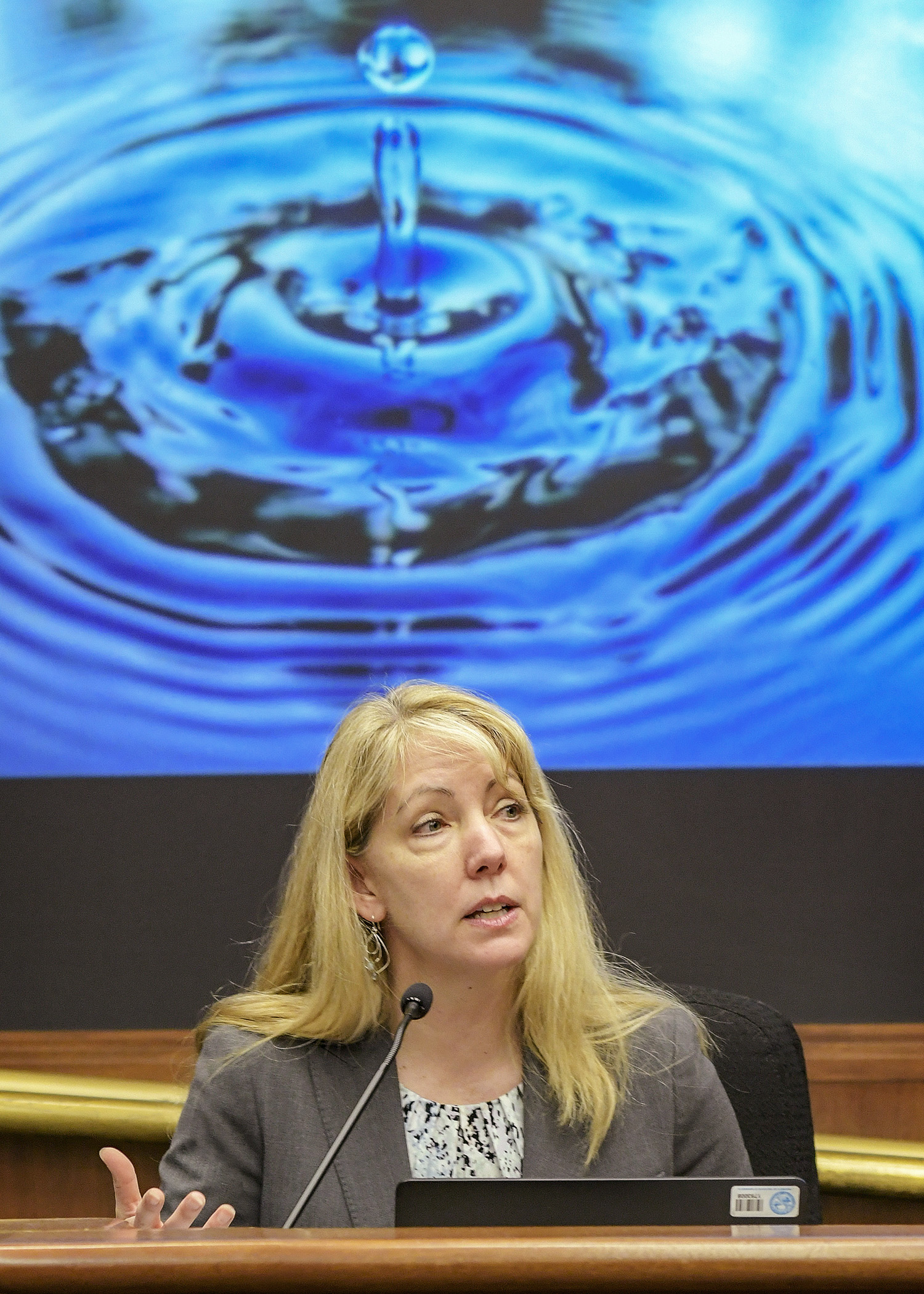New House division to address water concerns
The House Water Division held its inaugural meeting Monday afternoon, where members learned more about the work they will be doing this session for a resource currently under coordinated management by multiple agencies through the Minnesota Water Management Framework.
Leaders from a number of those agencies were on hand for the meeting, including: the Pollution Control Agency, Department of Natural Resources, Department of Health, Department of Agriculture, and the Board of Water and Soil Resources. The presentation covered how roles were divided amongst the agencies. The framework also includes partnerships with the Public Facilities Authority, Metropolitan Council and Minnesota Environmental Quality Board.
 Shannon Lotthammer, Minnesota Pollution Control Agency water commissioner, presents an overview of water management to members of the House Water Division Jan. 14. Photo by Andrew VonBank
Shannon Lotthammer, Minnesota Pollution Control Agency water commissioner, presents an overview of water management to members of the House Water Division Jan. 14. Photo by Andrew VonBankMember agencies meet informally on a regular basis to ensure communication and efficiency.
Rep. Mike Sundin (DFL-Esko) queried agency representatives on where funding for the state’s water conservation districts came from and how the program might better be supported.
BWSR Assistant Director Angie Becker Kudelka explained that funding varied because the water resources were protected through a variety of special purpose units.
“The special purpose units of local government all have slightly different funding mechanisms,” Kudelka said. “Watershed districts, for example, have the ability to do a levy. Soil and watershed districts do not, so they are reliant on their funds either from state resources or others. They have no ability to generate their own resources.”
The “perennial” insecurity in funding is a challenge to programing, Kudelka explained. Legislation helping create “predictable and stable funding” had been a priority with several past members of the legislature, she added.
Sundin also asked why the state would need to enforce conductivity standards in Minnesota.
Shannon Lotthammer, the Pollution Control Agency’s assistant commissioner for water, explained provisions in the federal Clean Water Act allow the Environmental Protection Agency to grant Native American tribes the authority to set standards if they demonstrate the ability to adopt water quality standards. The state can offer comment, but “beyond that it’s a relationship between the federal government and the tribes.”
The MPCA permits have to reflect not only the standards of that entity, but must consider any downstream standards.
Rep. Paul Torkelson (R-Hanska) questioned Lotthammer regarding permitting efforts for the Tru Shrimp Company, which had been looking to open a shrimp farm in Luverne, but recently announced it would build instead across the state line in Madison, S. D. Michael Ziebell, president and CEO of Tru Shrimp, stated in a press release that the decision came in response to state environmental regulatory challenges.
Lotthammer said the decision had taken the agency by surprise, as it had been working since September with the city to ensure that wastewater from the plant would not push the city out of compliance with a previously existing conductivity standard.
“We were working with the city of Luverne through that permitting process,” Lotthammer answered. “We recognize that there was a quick turnaround interest in that because of the economic development interest.”
Lotthammer said the MPCA remains willing to work with Tru Shrimp and the city, and had a number of options based on current scientific findings to address permitting issues.
Related Articles
Search Session Daily
Advanced Search OptionsPriority Dailies
Ways and Means Committee OKs proposed $512 million supplemental budget on party-line vote
By Mike Cook Meeting more needs or fiscal irresponsibility is one way to sum up the differences among the two parties on a supplemental spending package a year after a $72 billion state budg...
Meeting more needs or fiscal irresponsibility is one way to sum up the differences among the two parties on a supplemental spending package a year after a $72 billion state budg...
Minnesota’s projected budget surplus balloons to $3.7 billion, but fiscal pressure still looms
By Rob Hubbard Just as Minnesota has experienced a warmer winter than usual, so has the state’s budget outlook warmed over the past few months.
On Thursday, Minnesota Management and Budget...
Just as Minnesota has experienced a warmer winter than usual, so has the state’s budget outlook warmed over the past few months.
On Thursday, Minnesota Management and Budget...